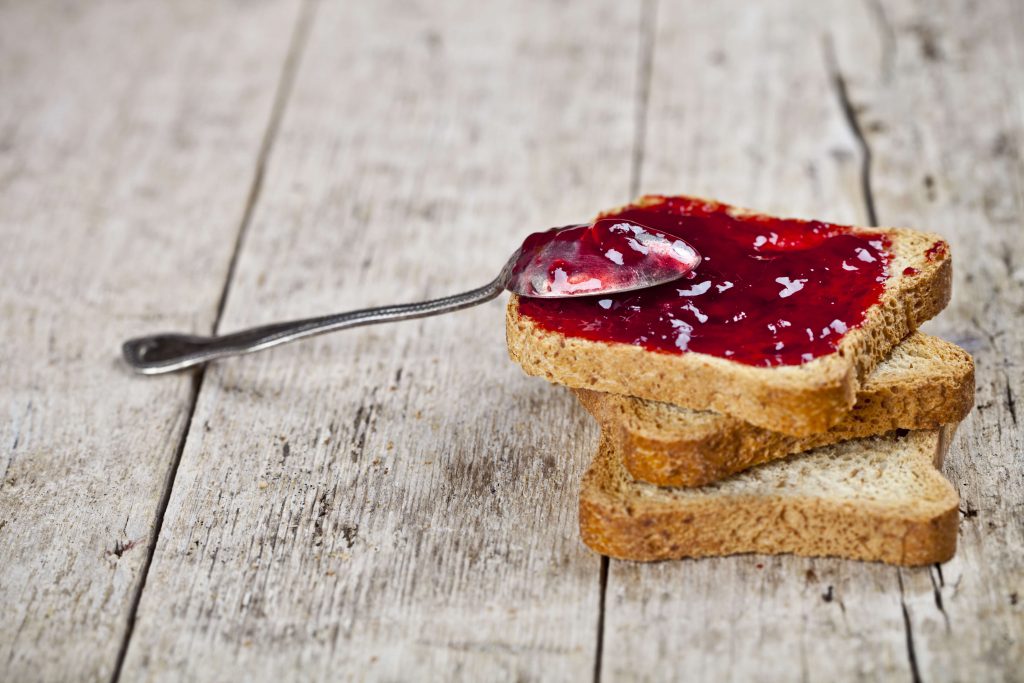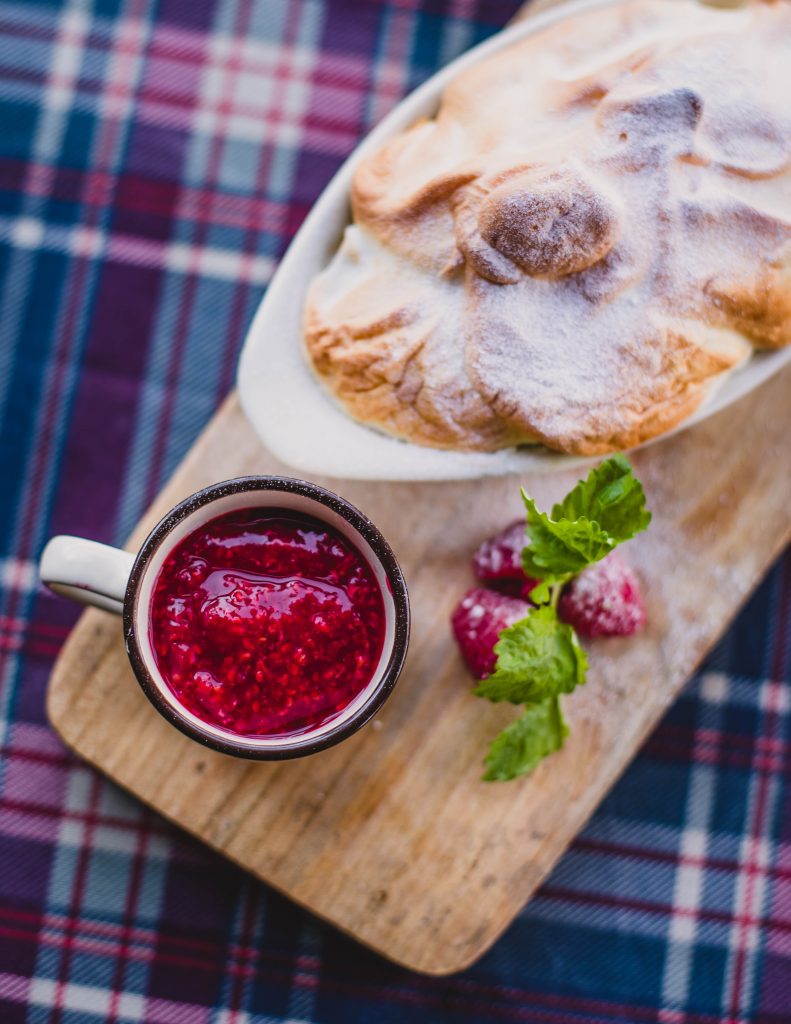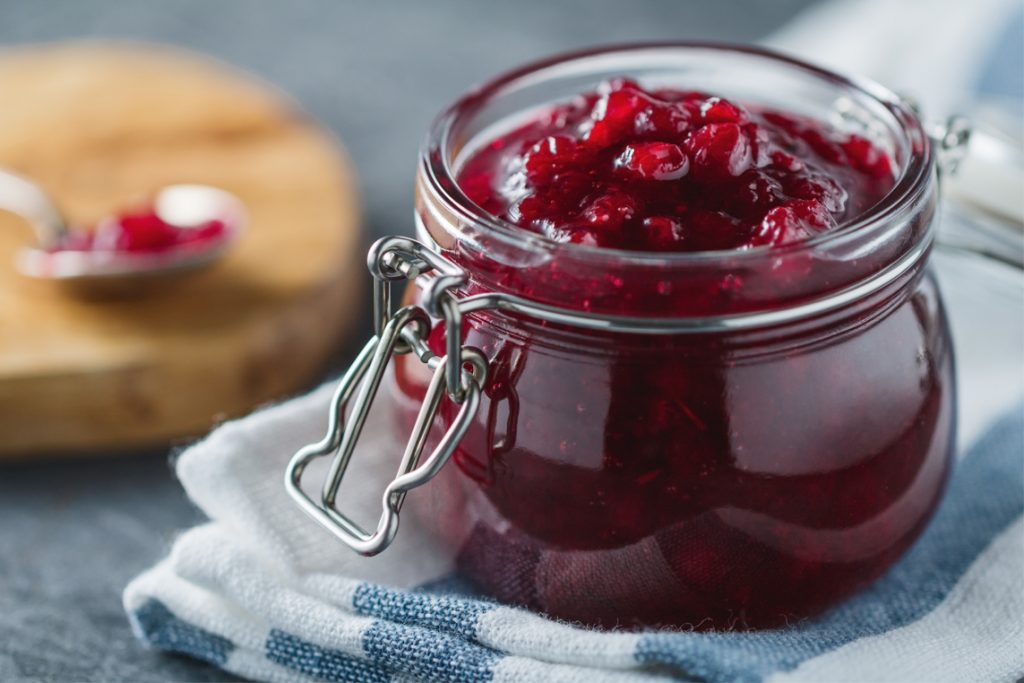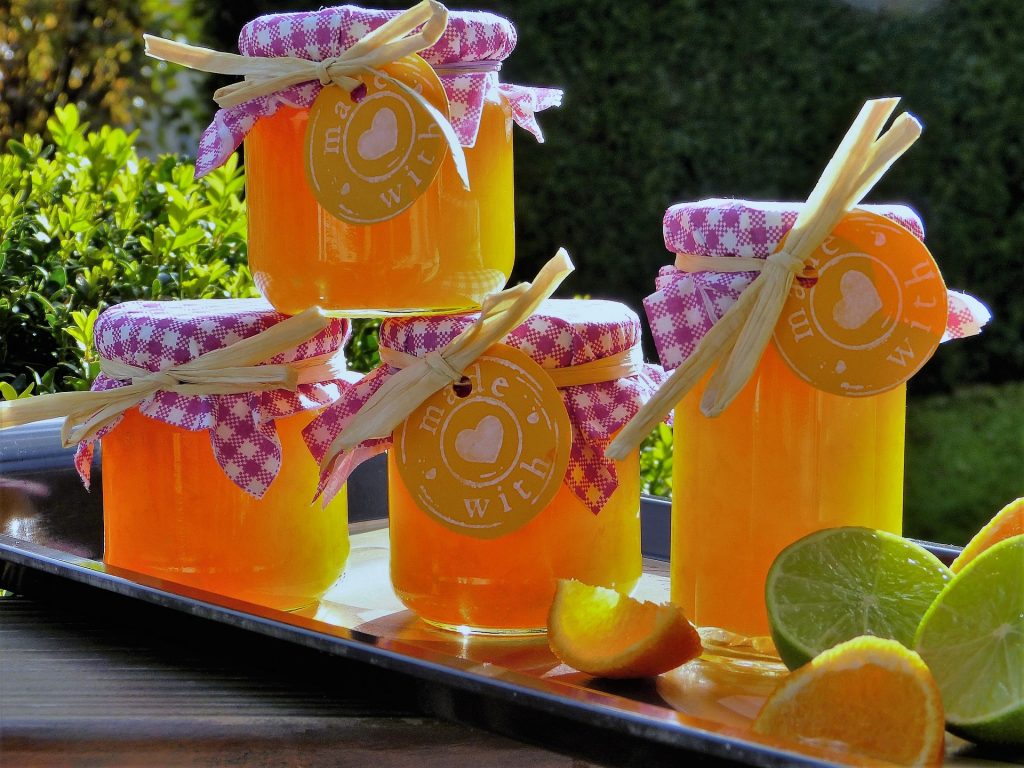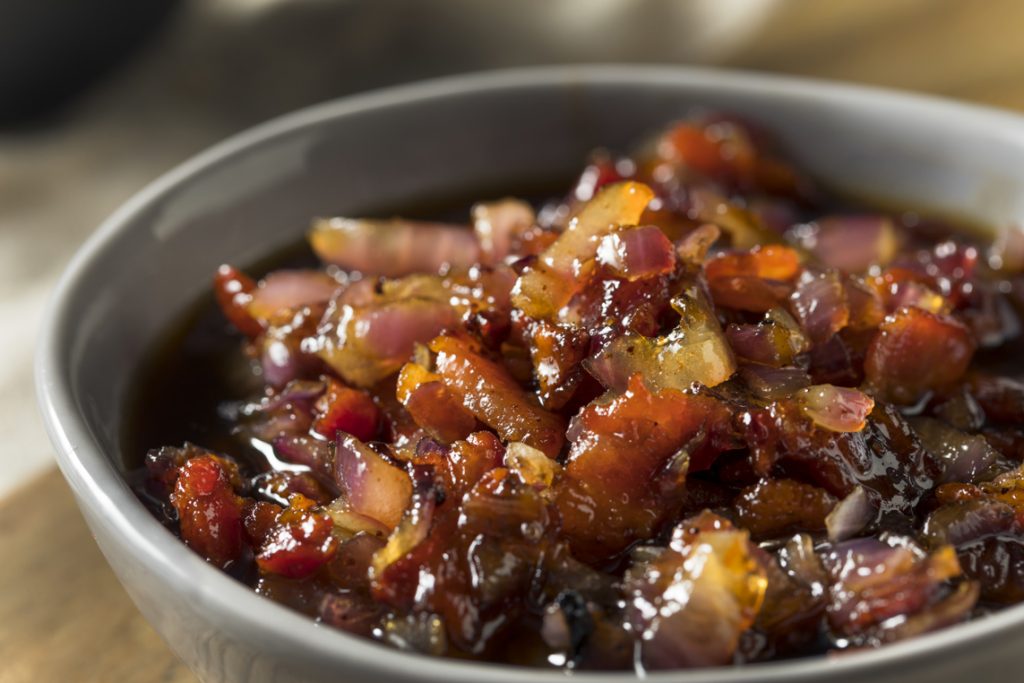Is there any more simply satisfying breakfast than toast with jam? Or wait, was that jelly? Or was it preserves? Maybe marmalade? Fruit spreads are all deliciously similar, but they do have definite distinctions. Whether you smother your fresh baguette with preserves from the farmers market or smear your peanut butter and jelly sandwich with Smuckers, it’s important to know the difference because they each have their own texture and sugar content.
What they have in common
According to the College of Agricultural, Consumer and Environmental Sciences at New Mexico State University, jam, jelly, preserves, and marmalades are all made up of the same basic four ingredients: sweeteners (such as can or beet sugar, corn syrup, or honey); naturally occurring acid, pectin (which can be swapped or even eliminated depending on the desired outcome); and of course, fruit.
So now that we know what’s in them, what makes them each different?
Jelly
Fruit juice, sugar
On one end of the sugar spectrum is jelly. Jelly is the smoothest and firmest type of fruit spread, being made solely from extracted fruit juice. It’s strong enough to hold its shape if it’s outside of its container. (That cranberry sauce you eat for Thanksgiving that’s shaped like a can? Definitely jelly.) The juice is then pressed through a fine mesh strainer to remove any pulp or seeds, resulting in a clear liquid. Juice is the heated and mixed with sugar, acid, and sometimes additional pectin (some pectin occurs naturally) to help it for that gel-like consistency.
Jam
Chopped fruit, sugar
If you’re smear on a spread that has lots of little crushed fruit pieces and seeds, you’re probably eating jam. Jams mixtures are about 45% fruit and 55% sugar. The recipe is then cooked to make the chopped fruit pieces soft and spreadable. Because of the fruit bits present, jam isn’t clear and is more spoonable than jelly.
Preserves
Whole fruit, sugar
Preserves contain the most fruit on the scale. Fruit is either chopped into large pieces or even cooked whole in the case of fruits like strawberries, cherries, or blueberries. Since preserves are so chunky, they’re the closest thing to real fruit as possible. Sometimes preserves are held together with a light syrup, but other times it’s more like jam in consistency.
Marmalade
Whole or chopped citrus, sugar
Marmalade is simply a distinction made for preserves made with citrus. Marmalades have citrus rinds as well as the fruit’s pulp present. They also contain lots of pectin, which explains why marmalades have a texture most similar to jelly.
Bonus: Chutney
Chopped fruit, sugar, vinegar, spices
You’ve probably seen chutney on restaurant menus or specialty food stores. Chutney falls somewhere between jam and preserves. It’s actually a type of jam made without adding any pectin, and flavored with vinegar and spices. You’ll commonly find it served with Indian cuisine.
Also try, Baked brie with cranberry jam.


